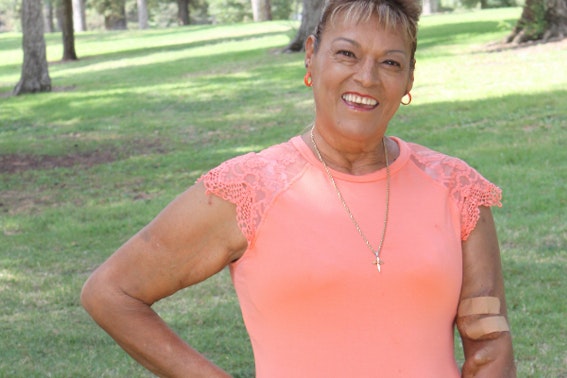Caring for your dialysis access

Daily access checks and infection prevention
Your access is so important that it’s sometimes referred to as your ‘lifeline for a lifetime.’ Proper care of your dialysis access is essential to ensure that it lasts and functions properly. Here are some important tips that may help your access last longer:
- Check your access every day to make sure it’s healthy.
- Know the signs of infection and other problems.
- Carefully follow your care team’s instructions on caring for your access
- Contact your care team if you have a question or concern about your access.
Check your access every day
Look at the skin on/around the access
- The skin should be one color and look the same as the surrounding skin.
- Call the care team if there’s discharge, redness, or unusual swelling.
Bring your access close to your ear
- Listen for the sound of the blood flowing through the access; you should hear a gentle ‘whooshing’ sound.
- If the sound changes or you hear no sound, call your care team.
Gently feel your access
- Make sure it feels the same as the day before.
- Lightly touch your scar. You should feel a light vibration or buzz (sometimes called the ‘thrill’).
- You should also feel the pulse as your heart pushes blood through the access.
- If the thrill/pulse looks/feels different or is missing, call your care team as soon as possible.

Daily fistula/graft check
Ken, a Satellite hemodialysis patient, shows you what to look, listen, and feel for when you check your access.

Access hygiene at your center
Annette, a Satellite hemodialysis patient, offers a few quick tips on what to do when you arrive for treatment.

Access hygiene at home
Annette, a Satellite hemodialysis patient, offers a few quick tips on caring for your access at home.
Your dialysis access and infections
Blood stream infection
Blood stream infection is when bacteria or fungi enters your blood. For people on dialysis, it’s often caused through contamination at the hemodialysis access. For example, a small skin infection at the access site can cause the germ to enter the blood, quickly spreading throughout the body.
If untreated, a blood stream infection can trigger the body to fight germs, but this helpful process can inadvertently cause damage to multiple organ systems. Blood stream infection is the second leading cause of death in people on dialysis.
Symptoms include chills, sweating, shaking, moderate/high fever, weakness, rapid breathing, increased heart rate, and paleness, especially in the face.
How to keep healthy your…
Fistula/graft access
DO:
- Wash the skin over your access with soap and water every day. Soap removes the oils on skin that can trap bacteria, which could find its way into your bloodstream if it is not removed.
- Conduct your daily one-minute access check.
- Tell your care team if you see a bruise or feel a change in the skin over your access.
- Rotate needle sites at each treatment.
DON’T:
- Wear tight-fitting clothing or jewelry that will put pressure on your access arm.
- Carry heavy objects across the arm (e.g., a purse or briefcase) that will compress the access.
- Have blood drawn, perform blood pressure checks or have IVs started in your access arm.
- Scratch or pick at any scabs on your access.
- Sleep or rest your head on your access arm.
PD catheter
DO:
- Wash your access area with the recommended antibacterial soap or cleanser. Rinse with sterile water or saline.
- Pat the skin dry with a clean, unused cloth or towel.
- Apply antibiotic cream around the catheter. Cover with sterile gauze.
DO NOT:
- Pick or remove crusts or scabs at the exit site.
- Take a bath or use a hot tub, so as to reduce the risk of infection.
- Swim in public pools or fresh water rivers/lakes.
Hemodialysis catheter
DO:
- Secure the catheter close to the skin. Make sure there are no kinks or bends in the catheter
- Keep the catheter and dressing clean and dry. Check with the dialysis staff if the dressing becomes wet or very dirty.
- Notify the dialysis clinic staff or your doctor immediately if there’s any sign of infection, such as fever, chills, redness, swelling, pain, drainage, or heat at the site of the catheter.
DO NOT:
- Pull on your catheter.
- Use sharp objects near the catheter (scissors, safety pins, etc.).
- Remove the dressing between dialysis treatments unless instructed to do so.
- Open the clamps or caps of the catheter.
- If the catheter pulls out, do not try to push the catheter back into your body. Call the doctor or dialysis clinic for instructions.
Have a hemodialysis catheter?
Ask your kidney doctor or care team about a fistula or graft access. Benefits include lower risk of infection and needing hospitalization. Plus, more efficient dialysis may mean less treatment time and more energy!
Read more about access options.


